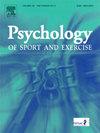发展身体和心理安全的运动空间:来自女性退伍军人对创伤知情运动干预的见解。
IF 3.3
2区 心理学
Q2 HOSPITALITY, LEISURE, SPORT & TOURISM
引用次数: 0
摘要
锻炼有益于退伍军人的身心健康。然而,女性退伍军人(WVs)在锻炼方面面临着独特的障碍,这可以通过创伤知情实践来缓解,例如将生活经验纳入项目开发。本研究让WVs确定他们的运动偏好和感知,旨在为创伤知情运动干预的未来发展提供信息。在纵向队列研究中注册的wv被邀请参加这个混合方法试点,其中包括调查和定性访谈,以探索运动偏好,障碍和促进因素。12例WVs(平均年龄47.7岁;58.3%的白人;58.3%终生PTSD;33.3%终身TBI)完成了调查和访谈。所有WVs都对适合自己需要的锻炼项目感兴趣。运动偏好是混合的,有家庭(n=8, 67%)、团体监督(n=7, 58%)、中等强度(n=9, 75%)与其他WVs一起进行的运动。认可的运动类型包括散步(n=10, 83%)、举重训练(n=9, 75%)和瑜伽(n=9, 75%)。运动的最大障碍是缺乏动力(n=7, 58%)和时间限制(n=5, 42%),而最大的激励因素是促进心理健康(n=10, 83%)、预防疾病(n=9, 75%)和改善或保持身体健康(n=9, 75%)。访谈强调了性暴力和伴侣暴力在女性生活中的普遍存在及其对运动参与的影响。专题分析确定了障碍(在健身房感到不安全、心理健康状况不佳、缺乏量身定制的项目和疼痛)和促进因素(促进身心健康、结构和问责制、与其他wv的社会联系)。研究结果表明,WVs对适合自己需要的锻炼项目很感兴趣。这些结果被用来指导当地的创伤知情运动计划的发展,并为未来的研究指明方向。本文章由计算机程序翻译,如有差异,请以英文原文为准。
Developing physically and psychologically safe exercise spaces: Insights from women veterans on trauma-informed exercise interventions
Exercise benefits both physical and mental health. However, women veterans (WVs) face unique barriers to exercise which may be mitigated by trauma-informed practices such as incorporating lived experience into program development. This study engaged WVs to identify their exercise preferences and perceptions, aiming to inform future development of trauma-informed exercise interventions. WVs enrolled in a longitudinal cohort study were invited to participate in this mixed-methods pilot study, which included a survey and qualitative interview to explore exercise preferences, barriers, and facilitators. Twelve WVs (mean age = 47.7 years; 58.3 % white; 58.3 % lifetime PTSD; 33.3 % lifetime TBI) completed the survey and interview. All WVs were interested in an exercise program tailored to their needs. Exercise preferences were mixed, with preferences for home-based (n = 8, 67 %), group supervision (n = 7, 58 %), moderate-intensity (n = 9, 75 %) programs that take place with other WVs. Endorsed exercise types included walking (n = 10, 83 %), weight training (n = 9, 75 %), and yoga (n = 9, 75 %). Strongest barriers to exercise were low motivation (n = 7, 58 %) and time constraints (n = 5, 42 %), and strongest motivators were promoting mental health (n = 10, 83 %), preventing disease (n = 9, 75 %), and improving or maintaining physical fitness (n = 9, 75 %). Interviews highlighted the prevalence of sexual and partner violence throughout WVs lives and their impact on exercise engagement. Thematic analyses identified barriers (feeling unsafe in gyms, poor mental health, lack of tailored programs, and pain) and facilitators (promoting physical and mental health, structure and accountability, social connection with other WVs). Findings indicate that WVs are interested in exercise programs tailored to their needs. These results are being used to guide the local development of trauma-informed exercise programs for WVs and highlight directions for future research.
求助全文
通过发布文献求助,成功后即可免费获取论文全文。
去求助
来源期刊
CiteScore
6.40
自引率
5.90%
发文量
172
审稿时长
69 days
期刊介绍:
Psychology of Sport and Exercise is an international forum for scholarly reports in the psychology of sport and exercise, broadly defined. The journal is open to the use of diverse methodological approaches. Manuscripts that will be considered for publication will present results from high quality empirical research, systematic reviews, meta-analyses, commentaries concerning already published PSE papers or topics of general interest for PSE readers, protocol papers for trials, and reports of professional practice (which will need to demonstrate academic rigour and go beyond mere description). The CONSORT guidelines consort-statement need to be followed for protocol papers for trials; authors should present a flow diagramme and attach with their cover letter the CONSORT checklist. For meta-analysis, the PRISMA prisma-statement guidelines should be followed; authors should present a flow diagramme and attach with their cover letter the PRISMA checklist. For systematic reviews it is recommended that the PRISMA guidelines are followed, although it is not compulsory. Authors interested in submitting replications of published studies need to contact the Editors-in-Chief before they start their replication. We are not interested in manuscripts that aim to test the psychometric properties of an existing scale from English to another language, unless new validation methods are used which address previously unanswered research questions.

 求助内容:
求助内容: 应助结果提醒方式:
应助结果提醒方式:


